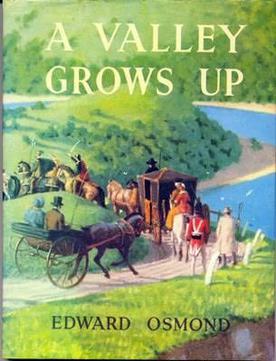A Valley Grows Up facts for kids

Cover of first edition
|
|
| Author | Edward Osmond |
|---|---|
| Illustrator | Osmond |
| Cover artist | Osmond |
| Country | United Kingdom |
| Subject | England from 5000 BCE to 1900 |
| Genre | Children's non-fiction, landscape history, cultural history |
| Publisher | Oxford University Press |
|
Publication date
|
1953 |
| Media type | Print (hardcover) |
| Pages | 81 pp. (first edition) |
| OCLC | 4676338 |
| 914.2 | |
| LC Class | DA110 .O72 |
A Valley Grows Up is a special history book for kids. It was written and illustrated by Edward Osmond and came out in 1953. This book tells the story of an imaginary valley in England.
It shows how the valley changed over 7,000 years. The story starts around 5000 BCE and goes all the way to 1900. Edward Osmond won the important Carnegie Medal for this book. This award is given to the best children's book by a British subject each year. It's rare for a non-fiction book to win this award!
Contents
Exploring the Valley's History
This book uses amazing pictures to tell its story. It has ten big, colourful paintings that spread across two pages. There are also many black-and-white drawings.
The simple words and pictures show how the valley's landscape changed. It explains how people slowly settled there over time. The story goes from prehistoric times up to the Victorian era.
How the Valley Changes
The book starts with the valley as an empty forest. Then, it slowly changes into a hillside, a wet swamp, and later a small village. Finally, it becomes a busy Victorian town called Dungate.
You can always spot the same bend in the river. This helps you see how the valley transforms through different time periods. It's like watching history happen right before your eyes!
How the Book Was Created
Edward Osmond was a famous illustrator. He first came up with the idea for this book while helping students. These students had some learning difficulties.
Osmond would draw on a blackboard during his lessons. He created an imaginary village with the students. They built it "from scratch" together.
From Classroom Idea to Book
This way of teaching was very effective. It helped the students imagine history better. This success led to the idea of turning it into a picture book.
The pictures were the most important part of the book. The words were added later to support the drawings. A writer named Marcus Crouch called the book "an imaginative interpretation of history."

